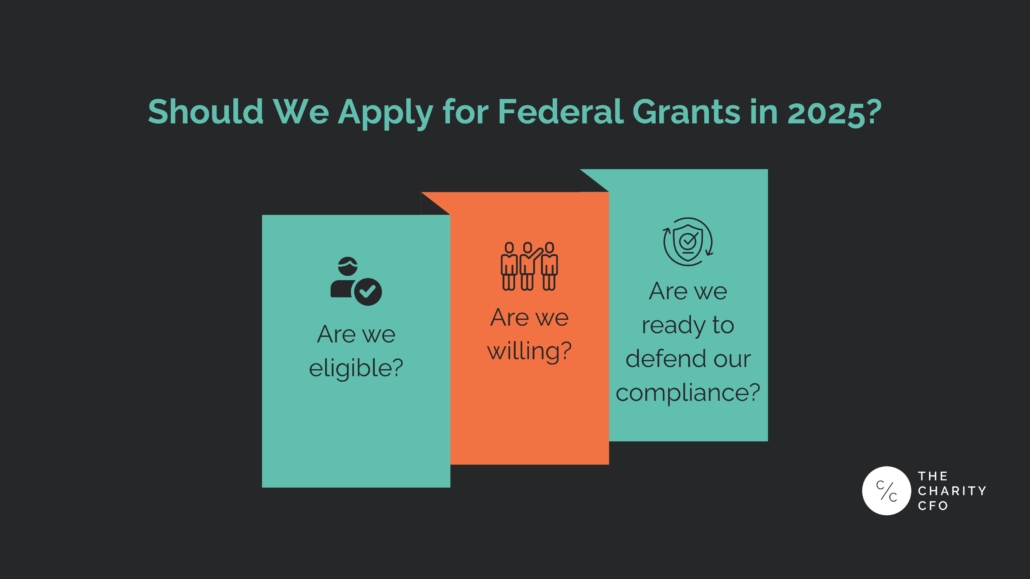Why You Shouldn’t Be Giving Up on Federal Grants
Nonprofit leaders are facing a moment of reckoning: Is federal funding still worth it?
Delayed opportunities. Agency confusion. Shifting compliance rules. The politicization of DEI language. For many, walking away from federal grants feels like the safer route.
But Fielding Jezreel says hold on.
In this episode of A Modern Nonprofit Podcast, Fielding—Founder & President of Jezreel Consulting and one of the nonprofit sector’s top federal grant strategists—joins Tosha Anderson to make the case for why you shouldn’t give up on federal grants.
Because right now, funding isn’t just funding. It’s advocacy. It’s access. And it’s about staying visible in a system that’s changing fast.
Fielding shares what she’s seeing behind the scenes with her clients, including:
- Agencies struggling to align executive orders with existing law
- Application requirements changing—sometimes week to week
- Entire divisions going quiet or disappearing (we’re looking at you, SBA)
Still, she encourages nonprofits to stay in the game. Because stepping back sends the wrong signal: maybe we didn’t need this money after all.

Forecasting as a Nonprofit’s Financial Early Warning System
Many of the financial challenges that derail nonprofits—unexpected capital expenditures, seasonal fundraising gaps, timing mismatches—aren’t included in the original budget.
Forecasting gives nonprofit leaders a strategic advantage by allowing them to:
- Model different financial scenarios
- Spot risks before they become emergencies
- Make informed decisions in real time
It doesn’t have to be complex. Start with your existing budget. Then, update projections monthly or quarterly. Replace budgeted numbers with actuals and monitor both net income and cash flow impact. The goal? Shift from reactive firefighting to proactive planning.

The key is knowing how to show up.
She urges organizations to ask not only are we eligible, but are we willing—to adapt language, challenge executive orders, or even fight back through the courts if necessary.
For those new to federal grants, Fielding advises patience. This is a time to learn, build capacity, and get your infrastructure tight. And if you’re applying? Bring your policies, legal support, and even your PR team—because compliance is on blast.
This isn’t about chasing dollars. It’s about staying in the room, and fighting for the communities we serve.
Contact Fielding
Website: https://www.jezreelconsulting.com/
LinkedIn: https://www.linkedin.com/in/fieldingjezreel/
Apply to join the Fast Track Training and Federal Grants Accelerator (Beta pricing ends July 14)
Sign up to receive weekly federal grants tips from Fielding’s newsletter
Check Out These Blogs Next
Is Your Nonprofit Ready For Federal Grant Funding?
Best Practices when Accounting for Grants
Follow Us Online
Stay connected and get more exclusive content on:
- Website: www.thecharitycfo.com
- Instagram: @thecharitycfo
- Facebook: https://www.facebook.com/thecharitycfo
- LinkedIn: https://www.linkedin.com/company/the-charity-cfo-llc/posts/?feedView=all
- TikTok: @thecharitycfo
- Spotify: https://open.spotify.com/show/6hofQXPCxiPZuZy3OecW8y
- Apple Music: https://podcasts.apple.com/us/podcast/a-modern-nonprofit-podcast/id1542301310
Get Involved
About The Charity CFO
We are an accounting partner that truly understands nonprofits. We know the missions that drive you, the obstacles that challenge you, and the dedication your job demands. We “get” nonprofits, because nonprofits are all that we do. If you need help with your accounting and bookkeeping, let’s talk.
Book a FREE consultation here!






